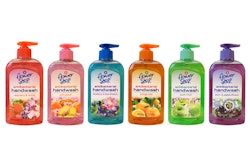The results of this poll of 202 nurses will be published in the July/September issue of Journal of Nursing Care Quality .
The study, scholarly research by 2 nurses, intended to address the
working conditions which may contribute to nurse medication errors.
Other reasons for medication errors included illegible or unclear
handwriting from a physician (86%), high patient-nurse ratio (71%),
unclear verbal orders (68%), insufficient staffing (68%), nurse
incompetence (66%), and poor training (56%).
The study drives home the fact that, “in clinical settings, nurses
function in fast-paced, complex, unpredictable settings with
high-stakes patient care situations.”
According to the study, many errors are not reported, even when no harm
has come to the patient, and most certainly nurses feel bad when it
happens. An interesting side note, even though they may complain about
exhaustion, poor training, long shifts, etc., nurses still feel
personally responsible for their mistakes, and have low self-esteem and
a strong sense of failure when an error occurs.
A publisher’s packaging perspective:
I don’t know how to address the communication issues between doctors
and nurses (probably volumes exist exploring this dynamic), but I know
a little about packaging.
I do not think I am naïve enough to believe we can get drug companies
to change their packaging even if 2 of their own drugs look alike, let
alone tackle identification problems between competitors. I’m sure as
incidents are reported these national records could be compiled to
discover which drugs are most commonly confused.
How about one extra yellow label per package--Most Commonly Confused With: _____________________.
At least the nursing community would be given an extra chance to stop and think they might be about to administer a look-a-like.
Maybe any drug marked with this sticker needs a second set of eyes or written sign off?
Yes there will be extra red tape to follow to make sure no one gets the
wrong drug. But if the package needs to work to keep the medicine dry
and safe and at full strength during transportation and storage right
up through use and disposal, it could also be called on to warn:
“Nurses report this particular drug is commonly confused with another.”
Better track and trace from the hospital pharmacy, where the wrong drug
would be caught while swiping the bar code before administering to
patient, is another, more high tech, more sophisticated and more
expensive approach.
With drug dispensing and authentication, errors would be easier to
report because inventory would be affected and could even be traced
back to the shift and the nurse.
Not sure this addresses the crisis situations described in the study
where typically a variety of factors contribute to a dosing or wrong
medication error.
Its one thing to say the doctor’s handwriting was questionable, but
combine that with fatigue, similar packages and other distractions, and
you can see how easy it would be to make a mistake.
Get your daily dose of global packaging trends. Follow me on Twitter .
Nurse medication errors and the role of packaging
Sixty percent of nurses polled identified look-a-like drugs and packaging as the sixth-leading cause of medication errors.
Jun 10, 2010
Machinery Basics
Get a jump on your 2026 packaging & processing goals at PACK EXPO East.
Be the first to find what’s next in packaging & processing at PACK EXPO East. See new solutions from 500 exhibitors, uncover creative ideas for 40+ verticals and gain inspiration from free sessions on industry trends—all in one trip to Philadelphia.
REGISTER NOW & SAVE
The AI revolution in packaging robotics is here
Robots that see variations, adjust grip pressure automatically, accept plain-English commands, and predict their own maintenance. Discover how AI is transforming packaging operations.
Read More
Downloads























